Previous posts on the CSR Reporting Blog with my pick of the Top Ten Reports of 2010 and the Top Ten Reports of 2011 have actually been among some of the most popular posts of all time on the CSR Reporting Blog. Who am I to mess with a winning formula?
What do I look for in a winning report? Authenticity, Materiality and Impacts. The AIM model. This is how it works (reproduced from last years' post)
Authenticity: I look for whether the company has reported in an honest way, using stakeholder voices to supplement performance data. Authenticity for me includes balance, accuracy and completeness. I look for targets and progress against stated targets.
Materiality: I look for whether the company has clearly defined the most important issues for the company and its stakeholders and described the way in which those issues have been identified and prioritized. Reporting materiality should also include a certain amount of contextual information which can assist us in understanding the issues and why they are material.
Impacts: I look for whether the company identified impacts rather than just presenting a shopping list of activities. This means discussing the outcomes of what was achieved. The outcomes are the achievement, not the activities. This is by far the most difficult thing for companies to address and very few, if any, do it well.
My Top Ten are reports that have caught my eye and stand out for me in some way. It's not an objective or methodological selection. But, I do use, browse, read and review many many many reports throughout the year, so you might say that the ones that stand out are hitting the mark in one way or another. By the way, you can also read Leon Kaye's Top Ten Sustainability Reports of 2012 on Triple Pundit. His picks are all western global companies: Cisco, Coca Cola, Intel, Marks and Spencer, Microsoft, Nike, Philips, SAP, Unilever and UPS. All great works, and worthy of any top report list. My selection includes reports which are probably lesser known and reflect a more diverse group of companies from different parts of the world.
Here... drumroll..... in alpha order are my Top Ten Picks of Sustainability Reports published in 2012.
(Becker Underwood, BT, CEMEX, China Mobile, Estee Lauder, Impahla Clothing, Larsen & Toubro, Maersk Line, Symantec and Tieto Corporation)
Becker Underwood Sustainability Report 2011
First report, GRI Application Level C, 81 pages
Becker Underwood is a privately-held multinational company, founded in 1982 in Ames, Iowa, that develops and produces a wide range of agricultural and horticultural solutions, including seed colorants and polymers, inoculants, beneficial nematodes, and mulch and turf colorants. Becker Underwood operates on five continents and employs over 430 people and generates $200 million in net sales. (Just in case you are wondering, as I was, what beneficial nematodes are, here's a definition: "Beneficial nematodes seek out and kill over 200 species of pest insect in the soil and will have no detrimental effect on species such as ladybugs, earth worms and other helpful beneficial insects." )
What I like about this report, in addition to the fact that it's a first, is its simplicity in reflecting a single overarching aim of this company: to have a NET positive impact from all direct and indirect business practices. That's easier said than done, but Becker Underwood, as a global but small-ish company, has taken the long view and developed a clear strategy to progress focused actions against seven strategic objectives. Actions include purchasing Renewable Energy Credits to offset 100% of electricity use, installing 84 solar panels at the company's Missouri site, energy efficiency improvements at several facilities and Becker Underwood has been working with Trucost to develop an environmental profit and loss account for the company's supply chain.
If anything, this report adheres too rigidly to the GRI framework which has constrained its writing. Rather than help us understand the true impacts of the company's activities, the report follows the GRI profile disclosure elements in order, and bypasses the stories and case studies that would make this report come alive. Nonetheless, as a first report, it's a credible testimony to the company's approach and actions, and is carefully crafted, modeling what can be done by businesses below $1billion revenues and 1,000 employees size.
BT Better Future Report 2012
GRI Application Level A, web-based report with 8 page downloadable summary
BT is one of the world’s leading communications services companies, operating in the UK and in more than 170 countries worldwide. Main activities are the provision of fixed-line services, broadband, mobile and TV products and services as well as networked IT services. BT employees over 90,000 people and has a total revenue of over GBP 19 billion.
BT has been reporting since the 90's and they always tend to do a good job. One of the best features of BT's reporting for some years now is the linkage of non-financial indicators and financial indicators. You can see this clearly on page 7 of the summary report. For example, one financial measure of the value of sustainability to BT's business is the value of customer contracts that BT competes for that have a sustainability element as part of the bid, which reached GBP 2.7 billion in 2012. This is linked to the underlying sustainability action of maintaining or improving BT's ethical index score.
Aside from this, BT's reporting is centered around their mission to "provide reliable and secure networks that help people and businesses to thrive". The web-based report contains a selection of interesting case studies which illustrate the ways in which BT lives this mission. For example, a story about how BT's emergency services 999-number wait time was reduced significantly shows how technology and new social media tools can be used in innovative ways.
BT's material issues are clearly laid out and a commentary from an external Leadership Panel adds extra perspective.
CEMEX 2011 Sustainable Development Report
GRI Application Level A+, 61 pages
Founded in Mexico in 1906, CEMEX, S.A.B. de C.V. is the world’s leading supplier of ready-mix concrete, and a leading cement and aggregates producer, with net sales of over $15 billion, selling to over 50 countries with 44,104 employees worldwide and an annual production capacity of 95.6 million tons of cement. CEMEX operates 59 cement plants, 1,921 ready-mix concrete facilities, 377 aggregate quarries, 226 land-distribution centers, and 70 marine terminals. That's a heck of a lot of cement.
CEMEX began publishing annual environmental, health, and safety reports in 1996, and then in 2003 published its first Sustainable Development Report. Entitled "Building a Better Future", the 2011 Sustainable Development Report is CEMEX's ninth report that covers the range of environmental, social, and governance issues and performance.
What's great about CEMEX's reporting is a very clear approach to sustainability with three key drivers and seven priorities, and a materiality matrix which highlights the priority issues, which are reported in detail. Health and Safety, for example, the highest material issue, takes five pages in this 61 page report, and, while demonstrating improved safety performance, doesn't omit to mention that a whopping 44 individuals died in connection with CEMEX's activities. I am sure that's a painful disclosure. Not surprisingly, really, that all these 44 fatalities were contractor and third party employees. This reinforces the big differential between safety performance for own employees and safety performance for third parties. I see this pattern with many companies (Note to self: This deserves a post of its own. Sometime soon). Companies using contractor or third party employees must pay far more attention to safety training and supervision. In the same section, CEMEX reports a reduction in lost-time accidents among its own employees versus prior year.
CEMEX is involved in activities to "proactively contribute to the transformation of the construction sector" through a range of collaborations and research programs on the value of concrete as a sustainable building material. CEMEX has even become somewhat of a consultant to customers in construction of sustainable buildings. A life-cycle approach to concrete features in the report. The impacts of concrete in so many different aspects of our lives - construction, urban infrastructure, even road congestion, makes this report a fascinating read, very informative and even educational, as CEMEX provides relevant background information. Each section opens up with "performance highlights" and continues with a description of the company's management approach and a selection of challenges ahead. Clearly a report which has been carefully planned, it is well structured, and presents issues in a credible way. The report is bolstered by the commentary of an Advisory Panel.
The thing I wonder is why the materiality matrix is hidden away on page 45, instead of being right up front as an essential backdrop to the company's strategy and reporting approach.
China Mobile Ltd 2011 Sustainability Report
GRI undeclared level, 58 pages
BT Better Future Report 2012
GRI Application Level A, web-based report with 8 page downloadable summary
BT is one of the world’s leading communications services companies, operating in the UK and in more than 170 countries worldwide. Main activities are the provision of fixed-line services, broadband, mobile and TV products and services as well as networked IT services. BT employees over 90,000 people and has a total revenue of over GBP 19 billion.
BT has been reporting since the 90's and they always tend to do a good job. One of the best features of BT's reporting for some years now is the linkage of non-financial indicators and financial indicators. You can see this clearly on page 7 of the summary report. For example, one financial measure of the value of sustainability to BT's business is the value of customer contracts that BT competes for that have a sustainability element as part of the bid, which reached GBP 2.7 billion in 2012. This is linked to the underlying sustainability action of maintaining or improving BT's ethical index score.
Aside from this, BT's reporting is centered around their mission to "provide reliable and secure networks that help people and businesses to thrive". The web-based report contains a selection of interesting case studies which illustrate the ways in which BT lives this mission. For example, a story about how BT's emergency services 999-number wait time was reduced significantly shows how technology and new social media tools can be used in innovative ways.
BT's material issues are clearly laid out and a commentary from an external Leadership Panel adds extra perspective.
CEMEX 2011 Sustainable Development Report
GRI Application Level A+, 61 pages
Founded in Mexico in 1906, CEMEX, S.A.B. de C.V. is the world’s leading supplier of ready-mix concrete, and a leading cement and aggregates producer, with net sales of over $15 billion, selling to over 50 countries with 44,104 employees worldwide and an annual production capacity of 95.6 million tons of cement. CEMEX operates 59 cement plants, 1,921 ready-mix concrete facilities, 377 aggregate quarries, 226 land-distribution centers, and 70 marine terminals. That's a heck of a lot of cement.
CEMEX began publishing annual environmental, health, and safety reports in 1996, and then in 2003 published its first Sustainable Development Report. Entitled "Building a Better Future", the 2011 Sustainable Development Report is CEMEX's ninth report that covers the range of environmental, social, and governance issues and performance.
What's great about CEMEX's reporting is a very clear approach to sustainability with three key drivers and seven priorities, and a materiality matrix which highlights the priority issues, which are reported in detail. Health and Safety, for example, the highest material issue, takes five pages in this 61 page report, and, while demonstrating improved safety performance, doesn't omit to mention that a whopping 44 individuals died in connection with CEMEX's activities. I am sure that's a painful disclosure. Not surprisingly, really, that all these 44 fatalities were contractor and third party employees. This reinforces the big differential between safety performance for own employees and safety performance for third parties. I see this pattern with many companies (Note to self: This deserves a post of its own. Sometime soon). Companies using contractor or third party employees must pay far more attention to safety training and supervision. In the same section, CEMEX reports a reduction in lost-time accidents among its own employees versus prior year.
CEMEX is involved in activities to "proactively contribute to the transformation of the construction sector" through a range of collaborations and research programs on the value of concrete as a sustainable building material. CEMEX has even become somewhat of a consultant to customers in construction of sustainable buildings. A life-cycle approach to concrete features in the report. The impacts of concrete in so many different aspects of our lives - construction, urban infrastructure, even road congestion, makes this report a fascinating read, very informative and even educational, as CEMEX provides relevant background information. Each section opens up with "performance highlights" and continues with a description of the company's management approach and a selection of challenges ahead. Clearly a report which has been carefully planned, it is well structured, and presents issues in a credible way. The report is bolstered by the commentary of an Advisory Panel.
The thing I wonder is why the materiality matrix is hidden away on page 45, instead of being right up front as an essential backdrop to the company's strategy and reporting approach.
China Mobile Ltd 2011 Sustainability Report
GRI undeclared level, 58 pages
China Mobile has over 176,000 employees, nearly 650 million customers and a 66.5% market share of mainland China telecoms services. The company was incorporated in 1997, and has mushroomed to be one of the largest mobile networks in the world. Just a list of the China Mobile wholly owned subsidiaries takes up a full page in this report. China Mobile was the first company in mainland China to publish a Sustainability Report in 2007 and this is their sixth. It is indexed to the GRI, the UNGC and ISO26000.
China Mobile's vision is "Mobile Changes Life" and this report links the activities of the company with outcomes for a better society and environment. The company covers a broad range of issues relating to mobile technologies and consumer behavior and impacts, providing contextual information and background to this company's extensive reach. One small example: empty nesters. This is what China Mobile says:
"Mainland China is continuing to become an elderly society and the number of “empty nest” families
has increased significantly. According to the statistics, currently “empty nest” families have surpassed
50% in both cities and rural areas, with the number increasing to 70% in some large and medium-sized
cities. The question of how to care for the elderly becomes more pressing. We have fully
considered the need of the elderly in their daily life and innovated on information services for them
through customised terminals."
The Sustainability Performance key indicators are collected towards the end of the report and provide a great overview of China Mobile's performance. I like the fact that some of the performance areas are expressed in terms of impacts, and not just inputs (although there is room for even broader thinking in this area).
Estee Lauder Corporate Responsibility Report 2012
GRI undeclared level, 80 pages
The Estée Lauder Companies Inc. is one of the world's leading manufacturers and marketers of quality skin care, makeup, fragrance and hair care products, with sales of products are sold in over 150 countries and territories under the following brand names: Estée Lauder, Aramis, Clinique, Prescriptives, Lab Series, Origins, Tommy Hilfiger, and many more. The company has net sales of almost $10 billion, and employs approximately 38,500 people. The company was founded in 1946 by Estee Lauder.
The report is entitled "The Beauty of Responsibility" and this report is indeed a beauty. It projects a certain grace and refinement through its pleasing design, and well-placed imagery. Goals, progress in the reporting period and new goals are clearly set out up front, and issues such as diversity and inclusion, people development, advancing women, corporate philanthropy and environmental stewardship are well addressed. A large section is devoted to women's health and especially breast cancer, which has been the flagship cause of Estee Lauder for 20 years. Evelyn Lauder, who is credited with creating the pink ribbon, sadly passed away after battling with ovarian cancer in 2012 and a touching memorial page is devoted to her in this report.
While lacking some of the heavyweight aspects of Sustainability Reporting (stakeholder engagement processes, materiality analysis, value chain impacts, specific challenges etc), this report does present a credible picture of a company doing much to operate in a sustainable way as part of a core business philosophy. It certainly is the beauty of responsibility.
Estee Lauder Corporate Responsibility Report 2012
GRI undeclared level, 80 pages
The Estée Lauder Companies Inc. is one of the world's leading manufacturers and marketers of quality skin care, makeup, fragrance and hair care products, with sales of products are sold in over 150 countries and territories under the following brand names: Estée Lauder, Aramis, Clinique, Prescriptives, Lab Series, Origins, Tommy Hilfiger, and many more. The company has net sales of almost $10 billion, and employs approximately 38,500 people. The company was founded in 1946 by Estee Lauder.
The report is entitled "The Beauty of Responsibility" and this report is indeed a beauty. It projects a certain grace and refinement through its pleasing design, and well-placed imagery. Goals, progress in the reporting period and new goals are clearly set out up front, and issues such as diversity and inclusion, people development, advancing women, corporate philanthropy and environmental stewardship are well addressed. A large section is devoted to women's health and especially breast cancer, which has been the flagship cause of Estee Lauder for 20 years. Evelyn Lauder, who is credited with creating the pink ribbon, sadly passed away after battling with ovarian cancer in 2012 and a touching memorial page is devoted to her in this report.
While lacking some of the heavyweight aspects of Sustainability Reporting (stakeholder engagement processes, materiality analysis, value chain impacts, specific challenges etc), this report does present a credible picture of a company doing much to operate in a sustainable way as part of a core business philosophy. It certainly is the beauty of responsibility.
Integrated Financial and Sustainability Report, GRI Application Level A, 64 pages.
Spring Romance Properties 34 (Pty) Limited, trading as Impahla Clothing (Impahla), is a company based in Cape Town, South Africa and manufactures clothing under a sole source agreement for PUMA, a world-class sport and lifestyle company. Impahla is a privately owned business that has grown organically over the last eight years from 60 employees in 2004 to 234 in February 2012. In 2012, Impahla supplied in the order of 445,000 garments for a total turnover of R38 million, 31% up from 2011. The most significant recent development in the Impahla business has been the move to manufacture exclusively for PUMA.
Impahla started reporting in 2007 and this is their fifth report, and each one has been a gem. If anyone wants a role model for SME reporting, this is it. The open and inclusive style, the genuine and frank discussion of core issues, the well-written and carefully crafted messages, the conformance to the GRI framework without the appearance of a tick-box approach and the focus around material issues all make this company and its reporting one of the best, not just of 2012, but of several years. Design is always great too, with original photos of the operations and employees at all levels. Nothing Stock about this report. This discipline and degree of transparency does not come easy for a privately owned SME and is by no means an obvious approach. It requires absolute consistency and integrity by the company's leader-owners. We need more of this in business today. (Watch out for my DoShort book to be published in January about Sustainability Reporting for SME's in which I use Impahla as a case study, having interviewed the Managing Director, William Hughes).
GRI Application Level A+, 112 pages
I covered Larsen and Toubro's reporting on the CSR Reporting Blog earlier this year with a Triple Cone Award for consistently compelling and creative reporting.
Larsen & Toubro Limited (L&T) is a technology, engineering, construction and manufacturing company. It is one of the largest companies in India, founded in Bombay (Mumbai) in 1938 by two Danish engineers, Henning Holck-Larsen and Soren Kristian Toubro. Both of them were strongly committed to developing India's engineering capabilities to meet the demands of industry. L&T is traded on the Indian Stock Exchange and employs over 50,000 full-time employees and over 300,000 contract workers, boasting a turnover of around $13 billion.
For more detail, read my post earlier this year. Suffice it to say here that this company has become one of the few that delivers a report which I look forward to reading each year.
Maersk Line’s Sustainability Progress Report 2011
Not GRI, 127 pages.
Maersk Line, headquartered in Denmark, is the largest shipping company in the world with a global market share of 15%. Maersk Line employs 25,000 people
with 325 offices in 125 countries around
the world and operates a fleet of more than 600
ships which sail every major trade lane on the
globe, and make about 35,000 port
calls every year.
This is Maersk Line's second report and what I like about it is the vision and long-term thinking it projects. Entitled "Route 2", the name of Maersk Line's sustainability strategy, the report's introduction kicks off with "Towards 2050" and an overview of the challenges facing the shipping industry in the light of global issues and mega-trends. The report is structured around five core issues that are at the heart of Maersk Line's strategy, and includes fascinating insights. For example, the report includes a description of the Indian banana trade based on a socio-economic impact study conducted by Maersk Line, and examines the risks to this sector in light of the different findings. Maersk Line's cold-chain shipping is an important part of the global perishable food distribution network.
Maersk Line also presents good environmental data, including the impacts on its customers' supply chains. For example, Maersk reports that 169 key customers saved over 748,000 tons of carbon emissions by shipping with Maersk versus the industry average. In fact, overall, this report is one of the most fascinating reports I have read this year. It's immensely readable, with each section providing context, case studies and highly informative content. Maersk covers issues ranging from energy efficiency to illegal trade, from biodiversity to the floorboards in containers and from waste handling to exhaust gases from ships.
While I miss the structure of the GRI framework (an index, for example, and certain key indicators), and a materiality matrix, and this report is a little light on process for engaging with stakeholders, overall this is a great example of high-quality narrative and visionary sustainability performance.
Symantec Corporation 2011 Corporate Responsibility Report
GRI Application Level B+, 43 pages
I reviewed this report for the December edition of Ethical Corporation Magazine, and gave it a thumbs-up. These are the first two paragraphs of my review:
"Symantec’s latest report reflects a step-change in the company’s thinking and presentation of its corporate responsibility approach and performance. For the first time – the company has been reporting since 2008 – the report is organized around Symantec’s three strategic responsibility priorities: people (employees), world (environment, human rights, sourcing and community) and information (online security). These three focus areas form the basis of the structure of this report, which, at 43 pages, covers a healthy breadth of information in a crisp, coherent and intelligent way, while retaining focus. As reports go, this has all the positive elements: materiality matrix, input from internal and external stakeholders, clearly laid-out performance data over three financial years, and even a few failures frankly discussed. In fact, this is one of the few reports that lend themselves to reading cover to cover without inducing sleep." Enough said. Read it!
Tieto Corporation Corporate Responsibility Report 2011
GRI Application Level A+, 45 pages.
Tieto is an IT and product engineering services company headquartered in Finland and operating mainly in Nordic markets, Russia and Poland, with net sales of close to EURO 2 billion and employing 18,000 people.
This is Tieto's third CR Report, and it covers the spectrum of CR issues well. There is a detailed (and colorful) materiality matrix covering 25 issues, of which 10 are more material than others. Tieto clearly links its role as a business to the context of Green IT, about which there has been much research and clear conclusions drawn about the environmental benefits of online living. Providing good context, Tieto describes the ways in which it supports the online transition and offers customers lower-carbon lifestyles, calculating that in 2011, Tieto helped customers reduce carbon emissions by over 160,000 tons. Tieto has a vision to achieve carbon neutrality in its own operations, and provides detail on carbon performance including specific multi-year targets.
Tieto reports authentically, for example, detailing non-conformities found in quality audits and corrective actions taken. Similarly, customer satisfaction, a key material issue, is reported both in terms of the positive aspects mentioned in customer feedback, and also in terms of points for improvement.
While the Tieto report could be livened up with a little more in the way of case studies and stakeholder voices, and a greater shift from inputs to outcomes, it is a good example of clear, straightforward, well-structured GRI-based reporting.
Tieto reports authentically, for example, detailing non-conformities found in quality audits and corrective actions taken. Similarly, customer satisfaction, a key material issue, is reported both in terms of the positive aspects mentioned in customer feedback, and also in terms of points for improvement.
While the Tieto report could be livened up with a little more in the way of case studies and stakeholder voices, and a greater shift from inputs to outcomes, it is a good example of clear, straightforward, well-structured GRI-based reporting.
Special Mention:
All the above reports are published by corporations. I wanted to make a special mention of another excellent report published in 2012: CEFIC's Towards Sustainability 2011/2012 Report.
The world of business is moving into a future of sectors, not just individual corporations. More and more, we need to consider value chain impacts by sector because there is a minimum threshold of sustainability performance is required by all companies in a sector to enable meaningful systemic collective progress. The more advanced companies understand this and the more advanced sectors are already organizing themselves around sustainability themes. CEFIC (The European Chemical Industry Council "the forum and the voice of the chemical industry in Europe") is not the first sector association to publish a Sustainability Report - there are many, some geography specific as well as sector specific. However, I highlight the CEFIC Report because it is a good, serious example of a strong considered approach to sustainability by an industry sector, and as a first report published in 2012, represents another breakthrough on our collective sustainability journey.
Note: To be fair, as in previous years, I did not include published reports of clients which my company, Beyond Business, served this year. These include:
GSK Romania Sustainability Report
Netafim Ltd Sustainability Report
Novus International Sustainability Report
Liberty Global Corporate Responsibility Report
Wishing everybody Happy Reporting in 2013!
elaine cohen, CSR consultant, winning (CRRA'12) Sustainability Reporter, HR Professional, Ice Cream Addict. Author of CSR for HR: A necessary partnership for advancing responsible business practices Contact me via www.twitter.com/elainecohen on Twitter or via my business website www.b-yond.biz (Beyond Business Ltd, an inspired CSR consulting and Sustainability Reporting firm)













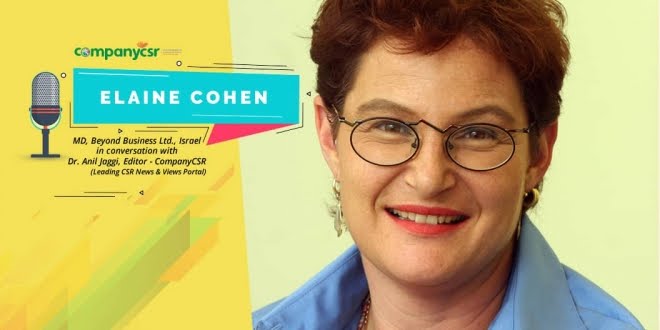
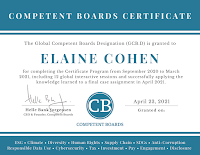


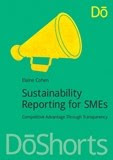
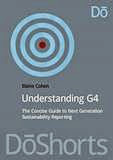
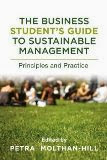
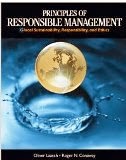
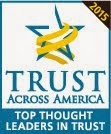










No comments:
Post a Comment